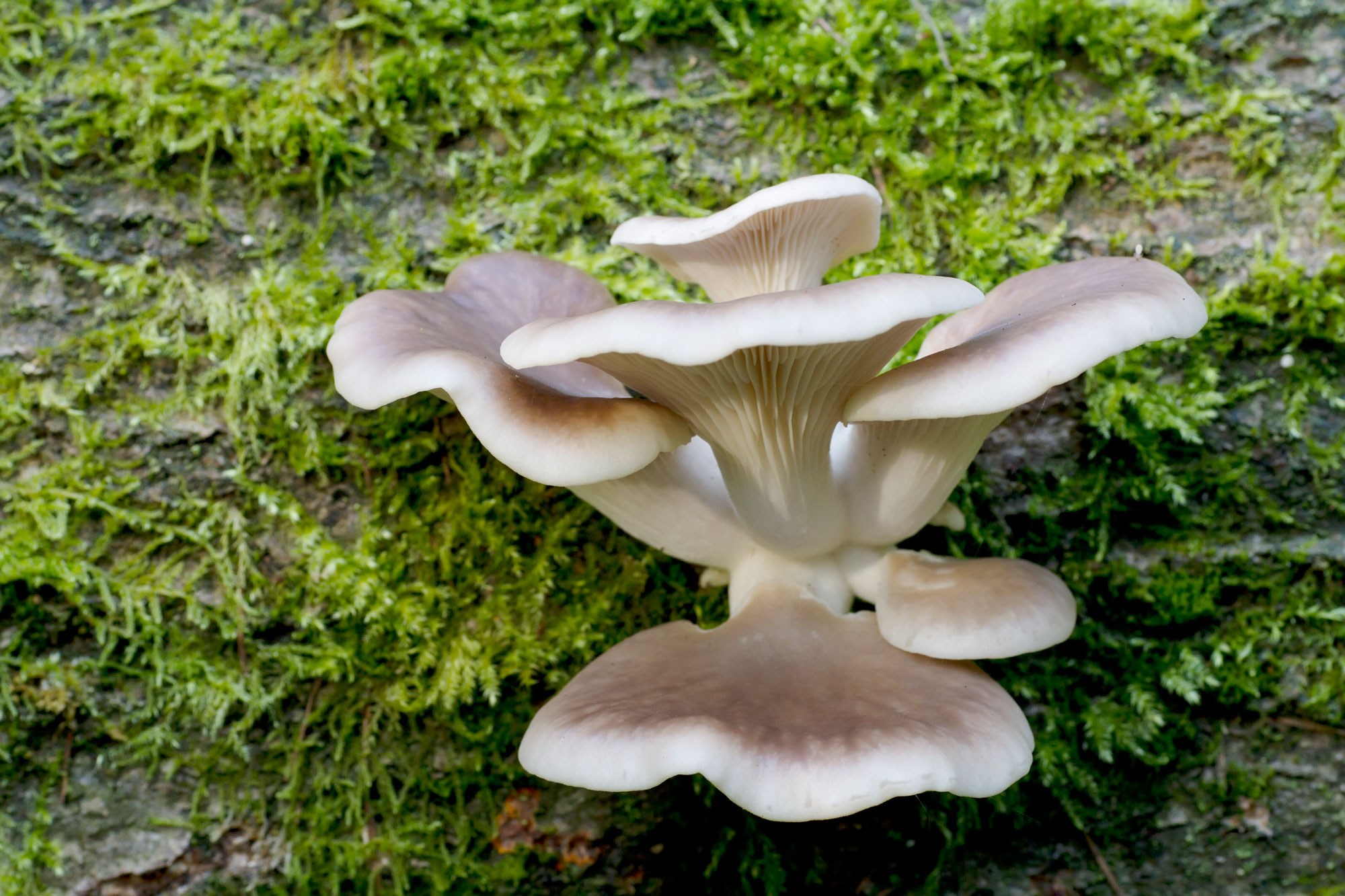Oyster Mushroom
Oyster mushrooms are fan-shaped fungi that are both aesthetically pleasing and culinarily versatile. Native to many parts of the world - including Alberta, where they grow abundantly on decaying aspen trees - these mushrooms derive their name from their oyster-like appearance and can be found in a range of colors.
Oyster mushrooms have been cherished for their delightful texture and subtle flavour. In Alberta and across Canada, they have gained popularity among farmers and chefs, fostering an appreciation among consumers for locally-grown produce.

More on Oyster Mushroom
About
Oyster mushrooms belong to a genus of some of the most widely consumed mushrooms globally. These fungi have a unique ability to grow on various substrates, making them a popular choice for cultivation. Often growing on decaying wood in the wild, they have the capability to break down and consume lignin, a complex polymer in wood. This ability to decompose organic matter classifies them as saprotrophic organisms.
For cultivation, they are often grown on straw or other agricultural wastes. Unlike many other fungi, oyster mushrooms require a lot of fresh air and have a lower tolerance for carbon dioxide buildup, necessitating proper ventilation during farming. Their mycelium spreads quickly, and under optimal conditions, they can be harvested in as little as three to five weeks from inoculation. When mature, the caps of these mushrooms range from broad and flat to slightly curled inwards.
Oyster mushrooms have been studied for their potential health benefits, including cholesterol-lowering properties and anti-tumor activities. Their versatility in culinary applications and health benefits have made them an essential part of modern agriculture and gastronomy.
History
Oyster mushrooms have been used for culinary and medicinal purposes for thousands of years, especially in Asian cultures. Ancient Chinese texts document their use as far back as the Tang Dynasty, both for their delightful flavour and supposed health benefits.
Over the years, they spread to various parts of Asia, including Japan and Korea, where they became integral to many traditional dishes. Their popularity in Europe grew more gradually, with many cultures adopting them into their cuisines over time.
In Canada, including Alberta, the appreciation for oyster mushrooms has been more recent but profound. With the rise of interest in locally sourced and sustainable foods, the past few decades have seen a surge in their cultivation and consumption. Indigenous peoples of Canada had knowledge of local fungi, but oyster mushrooms' widespread cultivation and consumption in Canada can be traced back to the late 20th century. As culinary trends evolved, so did the demand for diverse mushroom varieties, placing oyster mushrooms at the forefront of Canadian gastronomy.
Ways To Cook
Oyster mushrooms offer a versatile canvas for culinary exploration, with their mild flavour and meaty texture lending themselves to various dishes. They also often serve as a vegan substitute for recipes like vegan fried chicken, or as faux ground beef in burgers.
Before cooking, it's essential to clean them by gently brushing off any dirt or debris rather than soaking them, as they can become waterlogged. Their stems can be tougher than the caps, so it's advisable to trim any hard parts.
For a simple preparation, sautéing them in butter or olive oil with garlic and a pinch of salt brings out their natural flavours. Grilling them imparts a smoky touch, making them a vegetarian favourite for barbecues. They can also be roasted, stir-fried, or added to soups and stews.
Because of their delicate nature, it's best to add them toward the end of the cooking process for soups or stews to retain their texture. When paired with herbs, thyme, rosemary, and parsley are particularly complementary. Marinating them in a mixture of soy sauce, garlic, ginger, and sesame oil before cooking can infuse them with Asian-inspired flavours. Regardless of the method chosen, it's crucial to ensure they are cooked thoroughly, as raw oyster mushrooms can sometimes cause digestive discomfort. When stored, they should be kept in a paper bag in the refrigerator and used within a week for optimal freshness and flavour.
Some Of Our Favourite Videos
Alberta Oyster Mushroom Producers
Mushroom Labs Inc.
About this producerFoods from this producer:
Woodland Mushrooms
About this producerFoods from this producer:
Waterford Farms
About this producerFoods from this producer:
Northern Choice Mushrooms
About this producerFoods from this producer:
Ceres Solutions
About this producerFoods from this producer:
-
Mushroom Labs Inc.
Calgary, AB, Canada
-
Woodland Mushrooms
22472 Wye Road, Sherwood Park, AB, Canada
-
Waterford Farms
Waterford Farms, 9 Street Southeast, Calgary, AB, Canada
-
Northern Choice Mushrooms
Northern Choice Mushrooms, hwy33, Kinuso, AB, Canada
-
Ceres Solutions
1014 Laut Ave, Crossfield, Alberta T0M 0S0, Canada
